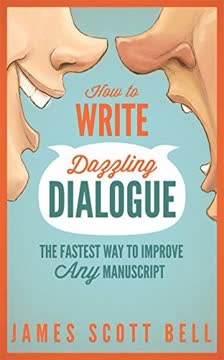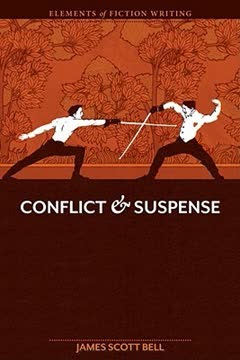Key Takeaways
1. Master the Mental Game: Overcome Fear and Self-Doubt
"Do the thing you fear, and the death of fear is certain."
Embrace fear as motivation. Fear is a natural part of the writing process, but it shouldn't paralyze you. Instead, use it as a catalyst for action. When anxiety strikes, channel it into your writing. Set challenging goals that push you out of your comfort zone, and take immediate steps towards achieving them.
Develop mental resilience. Cultivate a growth mindset by viewing rejections and criticisms as opportunities for improvement rather than personal failures. Remember that even successful authors face self-doubt. Create a support system of fellow writers or mentors who can offer encouragement and constructive feedback.
Focus on what you can control. Instead of worrying about competition or market trends, concentrate on producing your best work. Develop a writing improvement program, keeping a notebook to track your progress and gather inspiration. Regularly review and update your goals to maintain momentum and motivation.
2. Craft Compelling Characters and Dialogue
"The key to reader bonding is falling in love with the Lead."
Create multi-dimensional characters. Develop characters with grit, wit, and "it" factor – inner strength, mental acuity, and an intriguing quality that draws readers in. Use techniques like the voice journal to explore your characters' depths, allowing them to speak freely in stream-of-consciousness writing.
Master the art of dialogue. Write dialogue that serves as a compression and extension of action, always tied to a character's objective in a scene. Avoid small talk and make every line count. Consider writing dialogue-only scenes first, then filling in the blanks to discover unexpected character dynamics.
Show, don't tell. Reveal character through actions, reactions, and internal struggles rather than exposition. Use the "RUE" principle – Resist the Urge to Explain – to keep your scenes moving with deliberate speed and maintain reader engagement.
3. Develop a Disciplined Writing Routine
"Write hard, write fast, and the fire of creation will be yours."
Establish a consistent writing schedule. Set a daily or weekly word count goal and stick to it. Many successful authors, like Stephen King, write a set number of words every day. This discipline helps build momentum and overcome writer's block.
Create a dedicated writing space. Designate an area solely for writing to signal to your brain that it's time to work. This could be a home office, a corner of a room, or even a favorite café.
Embrace the power of routine. Develop rituals that prepare you for writing:
- Start at the same time each day
- Use specific music or ambient sounds
- Begin with a brief meditation or journaling session
Take strategic breaks. Incorporate a "writing Sabbath" – one day off per week to recharge your creative batteries. This can actually increase overall productivity by preventing burnout.
4. Perfect Your Opening and Keep Readers Hooked
"Speed is the essence of the opening."
Hook readers immediately. Your opening must grab attention from the first line. Create a disturbance in the character's world, introduce conflict, or pose an intriguing question that demands answers.
Avoid common pitfalls:
- Don't start with lengthy descriptions of weather or setting
- Steer clear of dreams or waking-up scenes
- Minimize backstory and exposition in the first chapter
Use progressive revelation. Gradually unveil information about characters and plot to maintain suspense and keep readers turning pages. Leave unanswered questions that compel the audience to read on.
End chapters with momentum. Craft chapter endings that create a sense of urgency or curiosity, making it difficult for readers to put the book down. Use cliffhangers, revelations, or new complications to drive the story forward.
5. Balance Plot and Character Development
"There are two levels of story. Various terms are used to describe them, but, for shorthand, I'll use Outer and Inner."
Intertwine external and internal conflicts. Develop your plot (outer story) alongside character growth (inner story). Ensure that external events challenge and change your characters, while their internal struggles influence their actions and decisions.
Create a strong story structure:
- Establish a clear premise and test its viability
- Outline key plot points and character arcs
- Use techniques like the "Q Factor" to provide motivation at crucial moments
Maintain narrative tension. Keep readers engaged by consistently raising the stakes for your characters. Introduce unexpected twists, moral dilemmas, or escalating challenges that test your protagonists' resolve and force them to grow.
Use backstory judiciously. Reveal character history and motivations gradually, weaving them into the narrative through dialogue, memories, or brief flashbacks. Avoid info-dumps that slow the pace of your story.
6. Revise and Edit with Precision
"Edit slow, edit tough, with a process both clear and cool."
Develop a systematic revision process. Create a checklist or schedule for tackling different aspects of your manuscript:
- Plot and structure
- Character development and consistency
- Pacing and tension
- Dialogue and voice
- Description and sensory details
- Grammar and style
Use the "cold read" technique. Set your manuscript aside for a period of time (weeks or months, if possible) before revising. This distance allows you to approach your work with fresh eyes and identify weaknesses more easily.
Seek outside feedback. Enlist beta readers, critique partners, or professional editors to provide objective input on your work. Be open to constructive criticism and use it to strengthen your writing.
Polish your prose. Focus on tightening your language, eliminating redundancies, and enhancing clarity. Read your work aloud to catch awkward phrasing or rhythm issues.
7. Navigate the Publishing Industry Strategically
"Because a bad agent is worse than no agent."
Research the market thoroughly. Understand current trends in your genre, but don't chase them at the expense of your unique voice. Identify potential agents and publishers who specialize in your type of work.
Craft a compelling query package:
- Write a concise, attention-grabbing query letter
- Develop a strong synopsis that captures your story's essence
- Polish your first chapters to perfection
Be professional in all interactions. Follow submission guidelines meticulously, personalize your queries, and maintain a courteous demeanor even in the face of rejection.
Consider your options. Weigh the pros and cons of traditional publishing versus self-publishing. Each path has its advantages and challenges, so choose the one that aligns best with your goals and resources.
8. Build Your Writing Career as a Business
"You are a business, and your books are the product."
Develop a long-term career strategy. Set both short-term and long-term goals for your writing career. Create a vision statement that encapsulates your aspirations and revisit it annually to stay on track.
Diversify your income streams. Consider multiple avenues for monetizing your writing:
- Book sales (print, ebook, audiobook)
- Speaking engagements
- Teaching or workshops
- Freelance writing or editing
- Merchandise or adaptations
Build your author platform. Establish a professional online presence through a website, blog, and social media. Engage with readers and fellow writers to build a community around your work.
Invest in your craft. Continuously improve your skills through:
- Reading widely in and outside your genre
- Attending writing conferences and workshops
- Participating in critique groups or masterminds
- Studying craft books and taking courses
Manage your finances wisely. Keep accurate records of income and expenses, set aside money for taxes, and consider working with a financial advisor who understands the unique challenges of a creative career.
Last updated:
Review Summary
The Art of War for Writers receives mostly positive reviews for its practical advice on writing craft and the publishing industry. Readers appreciate Bell's no-nonsense approach, concise tips, and motivational tone. Many find it useful for writers at various stages, from beginners to experienced authors. The book is praised for its easy-to-digest format and valuable insights on the mental aspects of writing. Some criticize its focus on traditional publishing and lack of depth on certain topics, but overall, it's considered a worthwhile addition to a writer's reference collection.
Similar Books










Download PDF
Download EPUB
.epub digital book format is ideal for reading ebooks on phones, tablets, and e-readers.












